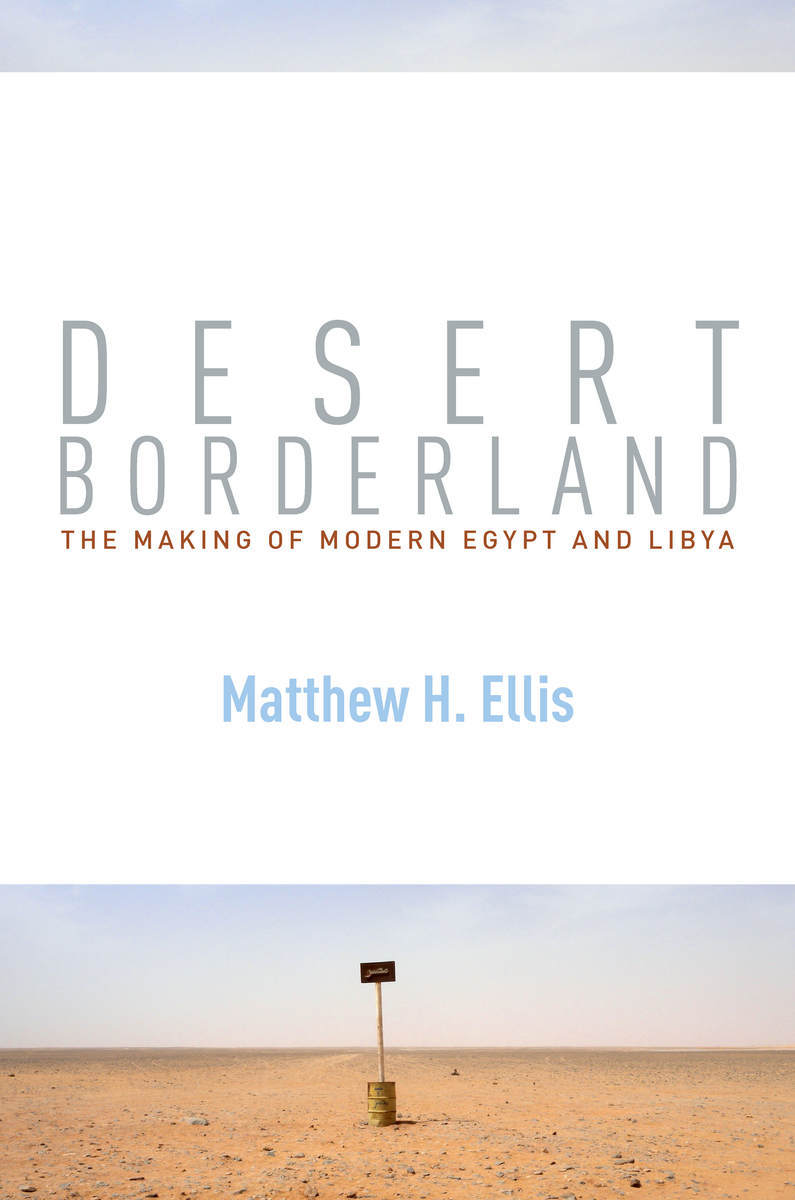Egypt, Libya, and the Desert Borderlands
Episode 423
Feed | iTunes | GooglePlay | SoundCloud
When the Ottoman state granted the province of Egypt to the family of Mehmed Ali Pasha in the 19th century, neither party much cared where Egypt's western border lay. As Matthew Ellis argues in his book, Desert Borderland, sovereignty in the eastern Sahara, the expanse of desert spanning Egypt and Ottoman Libya, was not simply imposed by modern, centralized states. In this episode, we discuss the various groups and actors who complicated the question of borders and political identity in one of the least studied corners of Ottoman and Middle Eastern history. Conflict and negotiations between oasis dwellers, Ottoman bureaucrats, Egyptian royals, the Sanusi order, and colonial officials kept this territory unbounded until the border was ultimately drawn in 1925. How did modern states attempt to practice sovereignty and claim territory in this vast desert borderland? And how did local populations resist and assist in state-making in the decades surrounding the First World War?
Stream via SoundCloud
Contributor Bios
 |
Matthew H. Ellis is a historian specializing in the social, intellectual, and cultural history of the modern Middle East and North Africa. He currently holds the Christian A. Johnson Endeavor Foundation Chair in International Affairs and Middle East Studies at Sarah Lawrence College, in Bronxville, NY. Desert Borderland is his first book. |
 |
Zoe Griffith is Assistant Professor of History at Baruch College, CUNY and completed her Ph.D. at Brown University in 2017. Her research focuses on political economy, law, and governance in the Ottoman Arab provinces from the 17th to the 19th centuries. She records mainly in New York City. |
Credits
Episode No. 423
Release Date: 26 August 2019
Recording Location: New York City
Audio editing by Chris Gratien
Music: Special thanks to Muhtelif and Kara Güneş
Images and bibliography courtesy of Matthew Ellis
Release Date: 26 August 2019
Recording Location: New York City
Audio editing by Chris Gratien
Music: Special thanks to Muhtelif and Kara Güneş
Images and bibliography courtesy of Matthew Ellis
Images
 |
| Copy of the elusive 1841 Ottoman map of Egypt, appended to the firman of investiture sent to Mehmed ‘Ali by the Ottoman Sultan. Source: The Başbakanlık Osmanlı Arşivi, İ.MTZ(05) 34/2004. Reproduced with permission. |
 |
|
| Egyptian Interior Ministry map from the 1870s, showing the distribution of date-palms in each province (Egypt’s five Western oases, all richly endowed with date-palms, are nowhere in sight). Source: Essai de Statistique Générale de l’Égypte. Reproduced by permission of the Hoover Institution Library. |
 |
| The Sidi ‘Awam mosque in Marsa Matruh, on the day of its inauguration by Ahmad Shafiq, an Egyptian official serving the Khedive 'Abbas Hilmi II. The interview refers to an image (included in Ellis's book) of Siwa's Sidi Sulayman Mosque, also built by the Khedive in the first decade of the twentieth century. Source: Iftitāḥ Masjid Marsa Matruh, 1910. |
 |
| Ahmad Shafiq, members of his entourage, and local shaykhs outside the Sidi ‘Awam mosque on the day of its inauguration. Source: Iftitāḥ Masjid Marsa Matruh, 1910. |
Select Bibliography
‘Abbas Hilmi II, The Last Khedive of Egypt: Memoirs of Abbas Hilmi II. Translated and edited by Amira Sonbol. Reading, UK: Ithaca Press, 1998.
Ateş, Sabri. Ottoman-Iranian Borderlands: Making a Boundary, 1843-1914. Cambridge: Cambridge UP, 2013.
Benton, Lauren A. A Search for Sovereignty: Law and Geography in European Empires, 1400-1900. New York: Cambridge UP, 2010.
Biger, Gideon. “The First Political Map of Egypt.” Cartographica: The International Journal for Geographic Information and Geovisualization 19:3 (1982): 83–89.
Dawson, Allan Charles, Laura Zanotti, and Ismael Vaccaro, eds. Negotiating Territoriality: Spatial Dialogues between State and Tradition. New York: Routledge, 2014.
Dumreicher, André von. Trackers & Smugglers in the Deserts of Egypt. New York: Dial Press, 1931.
Evans-Pritchard, E. E. The Sanusi of Cyrenaica. Oxford: Clarendon Press, 1949.
Kasaba, Reşat. A Moveable Empire: Ottoman Nomads, Migrants, and Refugees. Seattle: University of Washington Press, 2009.
Le Gall, Michel. “The Ottoman Government and the Sanusiyya: A Reappraisal.” International Journal of Middle East Studies 21:1 (1989): 91–106.
Maier, Charles S. Once Within Borders: Territories of Power, Wealth, and Belonging since 1500. Cambridge, MA: The Belknap Press, 2016.
Minawi, Mostafa. The Ottoman Scramble for Africa: Empire and Diplomacy in the Sahara and the Hijaz. Stanford, CA: Stanford UP, 2016.
Scott, James C. The Art of Not Being Governed: An Anarchist History of Upland Southeast Asia. New Haven: Yale UP, 2009.












Comments
Post a Comment
Due to an overwhelming amount of spam, we no longer read comments submitted to the blog.